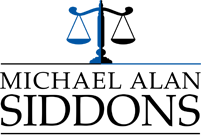Have you tried everything to pay off your debt but are still unable to do so? Filing for Chapter 7 bankruptcy may provide some relief. It offers debt relief by eliminating some of your unsecured debt, but it comes with serious consequences. As a result, you must exercise caution before filing.
This article is for you if you want to file for chapter 7 bankruptcy but don’t know where to begin. We will discuss Chapter 7 bankruptcy, its benefits and drawbacks, and provide you with a detailed step-by-step guide on how to file for Chapter 7 bankruptcy.
What Is Chapter 7 Bankruptcy?
Chapter 7 bankruptcy, also known as “straight bankruptcy,” is a powerful legal tool that allows people to get debt relief by discharging some or all of their debts. A Chapter 7 Court Discharge lets you get rid of most of your unsecured personal loans, like car loans, medical bills, payday loans, and credit card debt, so you can start over.
While this provides you with the financial reset you require to get your finances in order, there are some drawbacks; filing for Chapter 7 bankruptcy can affect your credit score for up to ten years. Credit will be more difficult to obtain during this time. Even if you do, the interest rate will be much higher.
You may also have to give up some assets, such as your car or jewelry, in order to repay creditors. However, some property can be protected when filing for bankruptcy, including:
- Household appliances and furniture
- Bedding and kitchenware
- Tools needed to run your business
- Some equity in a home and car
- ERISA-qualified retirement accounts
Understanding how bankruptcy exemptions work and your state’s bankruptcy exemption list is critical for protecting your property.
However, a chapter 7 bankruptcy cannot discharge spousal and child support, recent tax debts, or other government debts such as fines. Unless you can demonstrate exceptional circumstances, you will still be required to repay these.
Who Qualifies for a Chapter 7 Bankruptcy?
A Chapter 7 debt discharge is not available to everyone. To be eligible, you must first take and pass the means test. The means test examines your income, assets, and expenses to determine whether you have enough money to repay some of your unsecured debt.
Most people who earn less than the state’s median income qualify. If your income is higher than the median income in your state, you may still be eligible. But first, you must determine whether you have enough extra cash to pay off your debts. This entails considering your income, family size, and expenses.
You must also not have failed to file a Chapter 7 or Chapter 13 bankruptcy petition in the previous 180 days. You may also be eligible if you are unemployed or have a criminal record.
How to File for Chapter 7 Bankruptcy?
If you decide to file for Chapter 7 bankruptcy, the first thing you should do is consult with a qualified and experienced bankruptcy lawyer who is familiar with current bankruptcy laws.
Although you can file without one, working with a qualified attorney is strongly advised. Whether you hire a bankruptcy lawyer or not, the following steps must be taken in order to file for Chapter 7 bankruptcy:
Step 1: Credit Counseling
All people who file for bankruptcy must take a credit counseling course from an approved credit counseling agency. They must then provide the court with a completion certificate within 180 days.
Step 2: File paperwork
Collect all pertinent documentation regarding your income, debts, and assets. All of your unsecured debts must be listed separately from your secured debts. The bankruptcy court will want to know everything about your current and previous financial situation.
Step 3: File your petition
Take the paperwork to the bankruptcy court in your area after filing your official request for bankruptcy protection. When you file your case, you must pay court fees. If you cannot afford it, you can request that the fees be paid in installments.
You may also be able to have the fees waived. When you file for bankruptcy, an automatic stay goes into effect. Most creditors will not contact you, garnish your wages, or sue you for payment as a result.
Step 4: Court-appointed trustee takes over
Following the filing of your petition, the court will appoint a bankruptcy trustee to oversee the proceedings. The trustee’s primary responsibility is to demonstrate the accuracy of your bankruptcy information.
They may request additional documentation such as bank statements, tax returns, profit and loss statements, paycheck stubs, or any other financial documentation required as proof in bankruptcy court.
Step 5: Meeting of creditors owed
The trustee will set up a meeting with you, your bankruptcy lawyer, and your creditors, though creditors rarely attend. The trustee will inquire about your bankruptcy paperwork and finances. You must dispute a creditor’s claim or remove liens before your bankruptcy case is completed.
Step 6: Complete a debtor education course
You must complete the second “debtor education” course before the court will grant your petition. If you do not submit your certificate on time, the court may dismiss your case. Resolving this error can be expensive. You may be required to file a motion and then pay a bankruptcy filing fee.
Step 7: Your eligibility is determined
The bankruptcy judge will issue a bankruptcy discharge after reviewing your paperwork.
You will feel a weight lifted off your shoulders after completing these steps because the order discharging qualifying debts completely wipes them out. This means creditors will no longer be able to bother you.
Need Help Filing Chapter 7 Bankruptcy?
It is critical to obtain qualified legal assistance when filing for Chapter 7 bankruptcy court. Keep in mind that the creditors and other parties involved are represented by a lawyer, and you should be too. If you feel filing bankruptcy is your only option, contact Siddons Law at 610-255-7500 to discuss your options.











